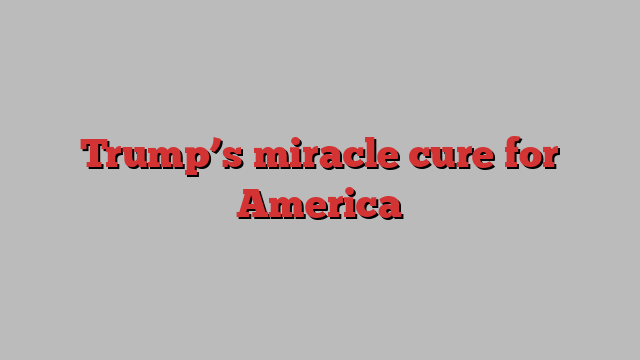
Unlock the US Election Countdown newsletter for free
The stories that matter on money and politics in the race for the White House
The idea that governments need multiple policy instruments in order to meet multiple policy goals is enshrined in the “Tinbergen Rule”. Named after Jan Tinbergen, a Dutch Nobel Prize-winning economist, the principle is rather self-evident. Growing an economy, providing public services and paying debts warrants an arsenal of policy tools. But, if his presidential election campaign is anything to go by, Donald Trump reckons one single policy lever could do a lot of the heavy lifting for America: tariffs.
Import duties are the former US president’s answer to everything. “Tariffs are the greatest thing ever invented,” he told voters in Michigan last week. He believes they can tame China, spur a manufacturing jobs boom, pay for tax cuts, lower food prices and stop de-dollarisation. Earlier this month, the Republican presidential nominee even suggested that the rising cost of child care could be resolved by tariffs. You do not need to be Tinbergen to be suspicious.
The list of proposed tariffs under “Maganomics” — as Trump’s policy agenda has been dubbed — keeps growing. This week, Trump threatened John Deere, a US agricultural manufacturer that is planning to shift some production to Mexico, with “a 200 per cent tariff”. But most analysts reckon he is serious about his plan for a 10 to 20 per cent bill on all imported goods, with 60 per cent for Chinese imports. That would take US import tariffs back to levels last reached in the 1930s.
Trump thinks the levies will prop up US producers, allowing them to create jobs and cut costs, while providing revenues to fund other tax cuts. That is wishful thinking. The protective barrier of tariffs certainly appeals to blue-collar voters who fear that competition from abroad will undermine their livelihoods. But the reality is that Trump’s agenda is more likely to harm the very voters he is selling it to. Perhaps that is the art of the deal.
For starters, tariffs are paid by US importers. Higher costs often filter down to consumers in higher prices. The Peterson Institute for International Economics estimates that Trump’s plans could cost the average household $2,600 a year. The poorest would suffer more.
Trying to absorb costs instead risks putting pressure on jobs. Although a National Bureau of Economic Research working paper finds that Trump’s trade war in 2018 to 2019 had little impact on jobs in protected sectors, retaliatory tariffs did have a clear negative effect. This time, however, his tariff agenda and the potential for a backlash on US exporters is significantly stronger. Then again, his plan would certainly free up time for American diplomats, as allies stop returning their calls.
As for paying for income and corporate tax cuts, another PIIE estimate suggests that even a 50 per cent tariff on all imports would not be enough to cover their estimated $5.8tn cost. Indeed, high tariffs encourage importers to shift to alternate suppliers, and exporters to divert to other markets. But Trump likes the idea of an “all tariff policy” that eliminates the need for income taxes. That is a concept more befitting of the mercantilist global economy of several centuries past, when trade was less established and states were smaller. The upshot? Trump’s plan would raise the deficit and inflation. So much for cheaper groceries.
A lot depends on how much Trump would actually follow through with what he says. The bombast could all be a ploy to get trade partners to the negotiating table. But Trump has made building a tariff wall around the US central to his campaign. Many voters believe in it. The problem is that his cure-all policy idea will be more of a poison pill for the American people, US economy — and the world.